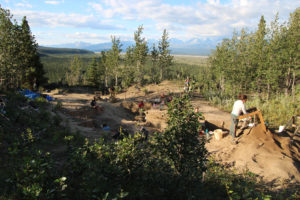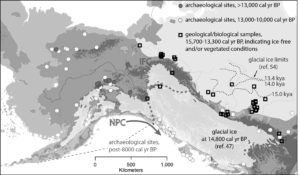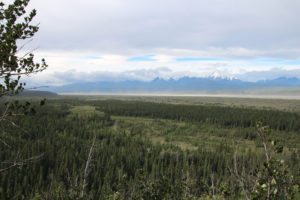
Amid ongoing debate related to resolving the route by which people first entered the Americas – a topic that has generated decades of scholarly studies – researchers led by Ben Potter and David Reich evaluate claims made based on current genetic, archaeological, and other data. They ultimately conclude that although the ice-free corridor (IFC) route is more often supported by data, the North Pacific Coast (NPC) route was viable, too, and in fact both theories should be considered as viable pathways to the Americas. The authors go on to call for new multidisciplinary research to explore the implications of their analysis. “As geneticists and archaeologists and Indigenous communities work together in a respectful and mutually beneficial manner,” they say, “the opportunities to analyze additional human remains to infer population history in the Americas grow.” Currently, there are several theories as to how humans first populated the Americas, all differing in timing, route and population source. For much of the 20th century, archaeologists firmly believed that the initial pathway into the Americas was via the ice-free corridor, a route from interior Alaska that snaked into the high plains of North America between two massive sheets of ice. Over the past 20 years, however, this consensus has been challenged and for many, overturned, by data that support the “kelp highway” hypothesis – a postulated route that is said to have followed the coastline of western North America. In this Review, Ben A. Potter, David Reich and colleagues examined claims based on genetic, archeological, and paleoecological data to identify strengths and weakness of both the IFC and NPC routes for the peopling of the Americas. Based on their assessment, Potter et al. say evidence supports Native American expansion having happened after 16,000 years ago via IFC, NPC or a combination of both. Neither theory can conclusively be accepted nor rejected, they say.
___________________________________

Northwest North America with archeological sites older than 10,000 calibrated years before the present (Supplementary Materials) and proposed colonization routes: IFC and NPC.
Potter et al., Sci. Adv. 2018;4: eaat5473.
___________________________________

Excavation of early site in Beringia. Ben A. Potter
___________________________________

Typical vantage point of an early Paleoindian site in Beringia (Alaska). Ben A. Potter
___________________________________
Article Credit: Science Advances, published by AAAS, the nonprofit science society.





